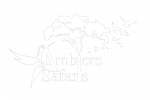Ngorongoro Conservation Area
Ngorongoro Conservation Area is a protected area and a UNESCO World Heritage Site located in Ngorongoro District, 180 km west of Arusha City in Arusha Region, within the Crater Highlands geological area of northern Tanzania.
Ngorongoro Conservation Area
The Ngorongoro Conservation Area is a protected area and UNESCO World Heritage Site located in the Ngorongoro District, 180 km west of the city of Arusha, in the Arusha Region, within the Crater Highlands geological zone in northern Tanzania. The area is named after the Ngorongoro Crater, a large volcanic caldera located in the region.
About NCA
National Conservation Area in the Arusha region of northern Tanzania, southeast of Serengeti National Park. Covering 8,300 square kilometers, it spans part of the Eastern Rift Valley in East Africa and contains a variety of habitats and landscapes, including grassy plains, savanna forests, forests, mountains, volcanic craters, lakes, rivers, and wetlands. The Ngorongoro Crater, one of the largest unbroken calderas in the world, is the most prominent feature of the park. There are also the major archaeological sites of Olduvai Gorge and Laetolil, where hominin remains dating back 2.1 million and 3.6 million years respectively have been discovered.
The main volcanic formations in the area, including Ngorongoro Crater and Olmoti and Empakaai volcanoes, were formed between 20 and 2 million years ago. Empakaai Crater is known for the deep soda lake that occupies nearly half of the floor of its caldera.
The Ngorongoro Conservation Area is home to the world’s largest herds of ungulates, including wildebeest, plains zebra, and Thomson’s and Grant’s gazelles. Predatory animals include lions, spotted hyenas, leopards and cheetahs. The endangered black rhino and African hunting dog are also found here. Among the 400 species of birds in the area are the pink flamingo, the silver-cheeked hornbill, the superb starling and the bronze and tacazze sunbirds.
In 1951, the area was included in the Serengeti National Park, but in 1959 it was designated separately as the Ngorongoro Conservation Area. It was inscribed on the UNESCO World Heritage List in 1979. Although cultivation is prohibited in the area, some 25,000 to 40,000 Maasai are allowed to graze their livestock there. In the latter part of the 20th century, damage to the ecosystem from overgrazing and tourist vehicles, as well as declining populations of black rhino, leopard, and elephant due to poaching, have raised concerns.
-
Ambiere Safaris has grown immensely from humble beginnings back in 2020. The company has evolved into an established local and international tourism brand offering a variety of tourism services, including wildlife safaris, mountain trekking, day tours, beach holidays, historical tourism and photography tours.
Contact Info
+255 766 842 655
+255 743 884 065
info@ambieresafaris.com
Isekei – Ilboru, Arusha – Tanzania
Mon – Sat 8.00 – 18.00 Sunday CLOSED
Quick Links
